Mango Benishan/Banaganpalli(Grafted) - Fruit Plants & Tree




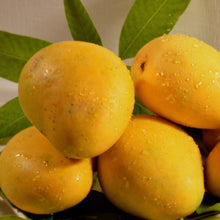
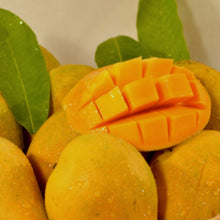
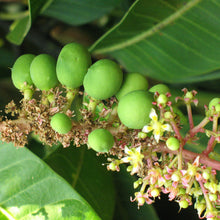
Mango Benishan/Banaganpalli(Grafted) - Fruit Plants & Tree




Damaged or lifeless? We’ll replace it for free. Learn more
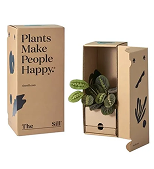
Double layered custom boxes to protect plants during shipping.
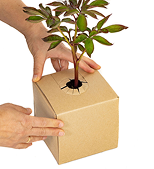
Air vents for proper air-flow
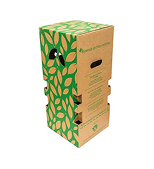
To preserve plant freshness during transit

Details steps of how to grow and maintain your plant
SPECIAL CHARACTER OF BANAGANPALLI MANGO - It is a commercial variety of South India. It is also known as Chapta, Safeda, Baneshan, Badam aam and Chappatai. Fruit is large in size and obliquely oval in shape. The fruit is golden yellow with yellow flesh and a thin, smooth skin which can also be eaten. The flesh is of a firm, meaty texture and is sweet and lacks of fibre. Fruit quality and keeping quality are good. It is a mid-season variety and is good for canning.
Mango botanically known as Mangifera indica from Anacardiaceae family. Mango have different names like King of tropical fruits, Ambassador of Indian fruits, Aam etc., Flowers produced in terminal panicles, each flower is small and white with five petals with a mild, sweet fragrance. Tropical and subtropical climate is identical for mango growth. Ideal temperature is 26℃-35℃ for optimum growth and yield of mango. Mangoes are rich source of Vitamin A & C.
MAXIMUM HEIGHT - Upto 6-8 meter, some time more or less depends on pot size and place of its location.
BLOOMING YEAR - In South India starts from November and in North India starts from February to March. It takes 100-150 days from flower to fruit development.
FRUITING TIME- Edible fruiting will start after 1.5-2 year after purchase. It starts from march and available up to mid-August.
GROWING TIPS - It grows best in moist, tropical and subtropical climates.
- If you want to grow in pot then minimum 25*25 inch of length & width and maximum size depends on you.
- You can plant at any time of the year, but most preferable time is June to July in low rainfall areas and October to November in high rainfall areas.
- It grows well in all soils but it shows good results in well drained soils with Ideal pH range is from 6.5 to 8.
- Manures and fertilizers should be applied in 2 month before the flowering seasons. Fertilizers are applied 45 to 90 cm away from the trunk.
- No watering is done 30 days before harvest.
- Mango trees need higher doses of nitrogen when young, but after they begin to bear fruit, they need less. At that time, they need higher doses of phosphorus and potassium, which promote flowering and fruiting.
- Use a commercial organic fertilizer with a high percentage of potassium, such 5-8-10, for fruit-bearing trees, or apply these nutrients with organic materials. Compost is a good organic source of both phosphorus and potassium. You can also use rock phosphate, guano, blood meal or bone meal to provide phosphorus, and seaweed to provide potassium.
INSIDE THE BOX
| S.No. | PRODUCT NAME | DIMENSION |
| 1. | Mango Fruit plant | 1-3 Feet Height |
| 2. | Growing Pot (Black color) | 6 Inch |
*above specifications are for indicative purpose only, actual dimensions may slightly vary.
PLANT CARE
LIGHT CONDITION - More than 6 hours of Direct Sunlight.
WATERING SCHEDULE - Water when the topsoil(2-3 inch) feels dry to touch. Always maintain moisture near the root zone specially during flowering season. Stop watering before 1 month of fruit harvest because it reduces the sweetness in mango.
SOIL TYPE - The soil should be well drained, fertile & rich in organic content.
FERTILIZER APPLICATION - Initially upto 1 year apply any organic fertilizer once in a month. After full establishment apply any organic fertilizer(2-3 times in a year) or before the flowering season.
PLANT PROTECTION - In mango main problem is Alternate bearing. It could be controlled by using Paclobutrazol for non-bearing fruit trees during first fortnight of September will induce flowering and fruit set yield during off years.
INITIAL CARE FOR 10-15 DAYS JUST AFTER RECEIVING YOUR PLANT
- Remove the Packaging Materials carefully.
- Press the soil in the pot & add additional soil(garden mix) if necessary.
- Maintain moisture in the pot, Do not over water it may kill your plant, so make sure that the soil should be dry between watering.
- Provide support with stick/moss stick(vine plant) in order to make straight growth, for needed plant only.
- Make sure that plants get enough direct bright light for 10-15 days & do not go for immediate transplanting(minimum 1-2month)
- Just prune if any branch of the plant is get damaged in transit. It happens very rare.
Selected plant of 8-10 inches
Planted into a 5-inch pot
With healthy, moisture-retaining soil
A care instruction sheet for maintenance guide

Get in touch for best pricing on bulk orders and landscaping projects.
 WhatsApp us
WhatsApp us

Call on 9177805454 (Mon-Sat, 9 AM-6 PM) or WhatsApp us – we’re here to help.
About Exotic Flora
At Exotic Flora, we’re passionate about bridging the gap in bringing plants to everyone. With over 500+ varieties across 7 plant categories, from exotic finds to everyday greens, we bring the entire range to you.
Our plants, sourced from all parts of India are nurtured at Kadiyam, in our 25 acres in-house nursery by a team of expert horticulturists. Once they are ready we ship all our plant varieties across India.
Our services go beyond safe delivery of plants. A dedicated support team is there to help you with any maintenance queries you may have.
At Exotic Flora we always believe in going that extra mile, because everyone should have the plants they love.
Every, fruit plants vary in their fruiting time, depends on location, climate & age of the plants. Generally, Grafted fruit plants starts fruiting within 2 years of planting, where as non-grafted plants take more than 2 years. You can check the fruiting time of each plant in the plant description.
No, Majority of fruit plants are not delivered with fruits. But some grafted fruit plants can be delivered with fruits and flowers mostly Citrus, Guava, Star fruit, Fig, Ber etc. But it is recommended to remove the flowers during early days, so that plants can get more branches and physical strength.
Grafting is a technique where two plants part are combined together so that they can grow together. Most commonly seen in Mango. Air Layering is also a vegetative propagation technique where a plant is produced while it is still attached to its parent's plants. Commonly seen in Guava. Stem cutting is a vegetative propagation technique, where soft, semi-hard, or hardwood stem is cut with 2-3 nodes and used for the multiplication of plants. Commonly seen in flowering & ornamental plants.
Yes, the grafted fruit trees produce fruit earlier, than the non-grafted fruit plants.
These are some of the rare and new fruit plants and it's varities, which are not avialable everywhere in our country.
Remove the plant from its pot. Make sure to not disturb the root ball. Place the plant in a prepared pit(1x1ft) or slightly bigger pot than the current pot. Firm the soil around the plant with your hands. Water well till it drains out from the drainage hole.
In order to maintain the good shape of the plants, proper care should be taken from the beginning like the pruning of unwanted and diseased parts of plants, stalking to young plants, regular maintenance of plants.
In General, a grafted/air layered/hybrid fruit takes 2 years for fruiting, whereas seeded grown plants take 4-5 years of time for fruiting. But it may vary depending on the plant types.
In general if your soil weell drained, fertile and organic in nature, it will produce good quality fruit. Sandy-loamy is the most preferable soil used for fruit plants.
Size and taste of each fruit plants varies depending on the varieties. You can find more details about each fruit plants in terms of size and taste in the description of individual plants.
Initial first 2 years are very important to feed the plants with organic manure and fertilizers regularly. It is recommended to add organic manure or compost to each plant in every 3 months of time intervals. Do not go for Chemical fertilizers it will weaken the plants in future.
Plastic pots with drainage holes preferably work best as they are lighter to move around. Any other container which is light in weight with a drainage hole can also work to grow fruit plants.
